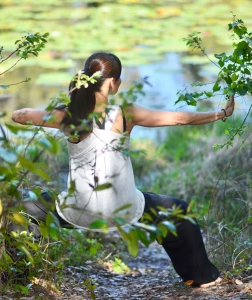
At the end of 2022 I tore my rotator cuff, not throwing a baseball for some important league game, not in some random construction accident nor act of heroism. Instead, one of my first favorite paternal pastimes was throwing my daughter as high as I could into the air then allowing her to crash down on to my palm, elbows flexed, held tight by my bicep’s insertion.
Everyone says the same thing: You blink and they’re all grown up! This isn’t exactly an example of that, but I definitely didn’t take adequate note that my favorite play toy had grown from 15 to 25 pounds, and as an acupuncture colleague who was treating me for the issue remarked: “Would you throw a 25-pound weight up and down and catch it in your palm?”
To which I replied: “It depends how adorable and joyful the weight was.”
Typical presentation of a torn supra-spinatous: Pain radiating into my deltoid, especially with my arm extended to the side and/or behind me—even worse with inward rotation (trying to pour water from pitcher into our filtration system). Occasional pain while lying on my shoulder at night, and I couldn’t throw a tennis ball, let alone a baby anymore. I had to find other ways to enjoy parenthood. I also got used to pouring water with my left arm, which was probably a temporarily decent brain exercise anyway.
My funny acupuncturist friend helped a bit—a lot of sports medicine, trigger points and gua sha techniques—though no classical points, and improvement was always temporary. For two years my intermittent, moderate pain continued, and I was terrified of the notion of surgery and determined as such to avoid it.
I continued to go for treatment, occasionally poked and cupped myself at home as much as I could (though the supraspinatous is located behind the shoulder, making local self-treatment relatively impossible), and got very diligent with my daily Qi Gong practice: Shoulder rotations, shoulder rolls, neck rolls and rotations, “silk reeling” exercises, which are great for creating unique notches of negative space around the joints for the corresponding breathwork’s oxygen to enter. “Qi moves the blood,” is one of our most ancient maxims, which means where oxygen goes, fluids follow. I couldn’t tell you when it happened any more than I could when my daughter jumped from 15 to 25 pounds, but somewhere between years 2 and 3 of my injury, enough fluids got to the tendon and joint for my pain to disappear!
Today I am unsure if the tear is still there—I’m 47, not 27, so my shoulder may never again be perfect. I continue to do my Qi Gong regularly, preventively, not only for my shoulder, but other vulnerable tendons and ligaments as well. Slow and steady heals the shoulder!
If you have chronic pain it is something that requires daily attention, an at home regiment, self-massage and gentle movement anywhere from 10-20 minutes 1-2 times a day, and patience, the “patient patient,” if you will. If you stop, if you half-ass it, or give up, you’ll likely be resigned to the “blue pill,” surgery and well… literal blue pills, either of which will eventually wear off. I often recommend tailored Qi Gong homework exercises to my patients with our sessions, but if you’d like local Qi Gong teacher referrals, please let me know—happy to refer!


